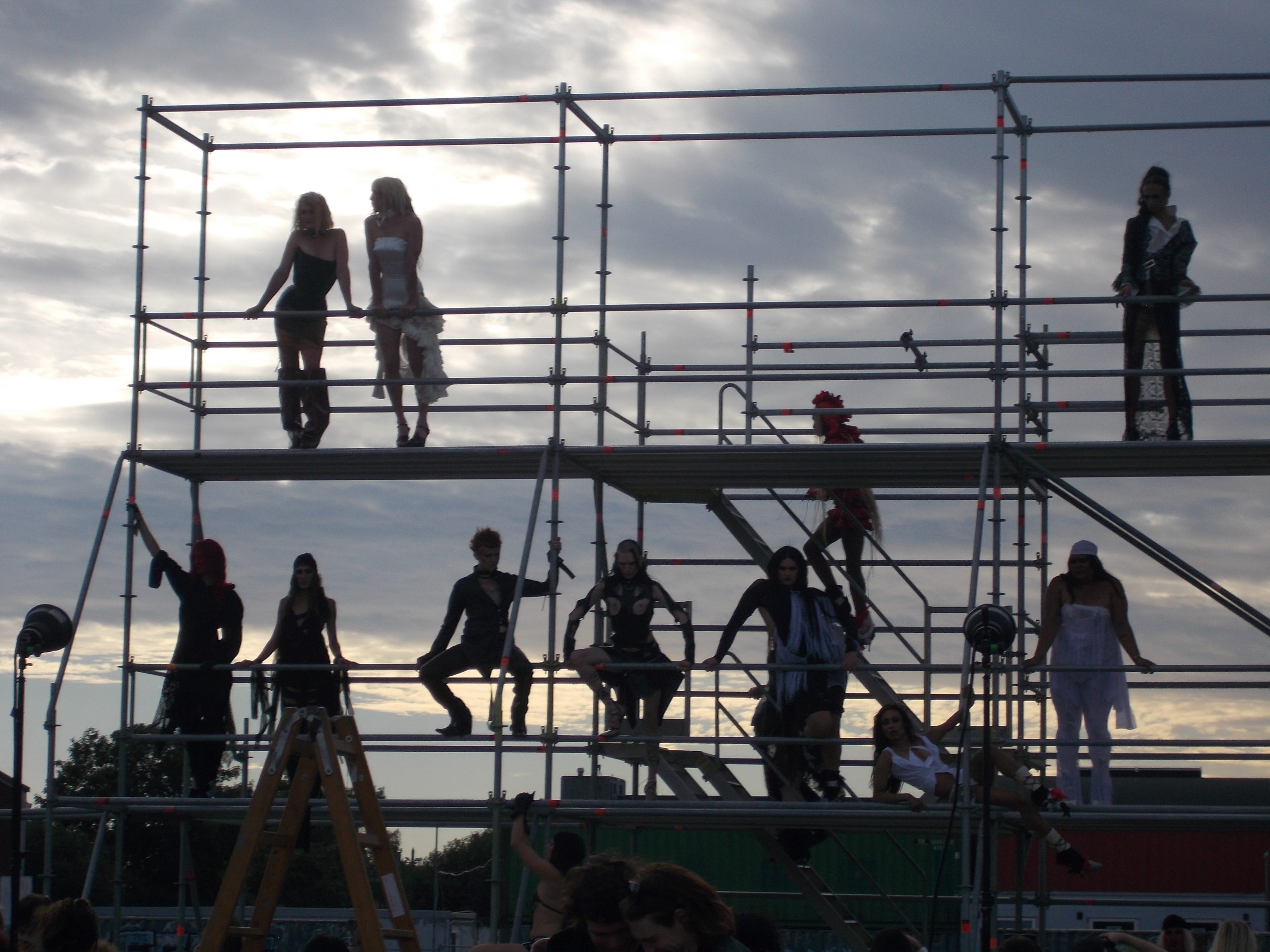
It’s the end of the world as we know it: the future of fashion week

Over droning which vibrates the entire strip of post-industrial wasteland where the show is taking place, a child with two prosthetic legs describes the end of the world. Models stumble out of a shipping container wearing gas masks, made up with bloody wounds and several days and nights’ worth of congealed eyeliner. This is the first year that ‘disruptive, deconstructive’ Danish streetwear brand Fine Chaos has been listed in the official Copenhagen Fashion Week schedule (last summer, their distressed ‘I WAS NOT INVITED TO FASHION WEEK’ t-shirts were best-sellers). This show, ‘FEAR THE DOME: WAR’, is part of a series/concept/universe entitled ‘The Tale of Contradicting Realities’: hope and fear, dystopia and utopia, order and Chaos. The audience wear Fine Chaos hoodies reading alternately ‘SAVE THE PEOPLE’ and ‘FUCK THE FLAWED SYSTEM’. They crane their necks to follow the models’ peregrinations, up metal stairs, down concrete. It’s difficult to tell, through sunglasses that cover the entire upper half of their faces, whether their concerns about the future have been sharpened or assuaged by the outfits, which resemble various stages of a zombie attack on Berghain. More importantly, the blood-splattered coats are cool.
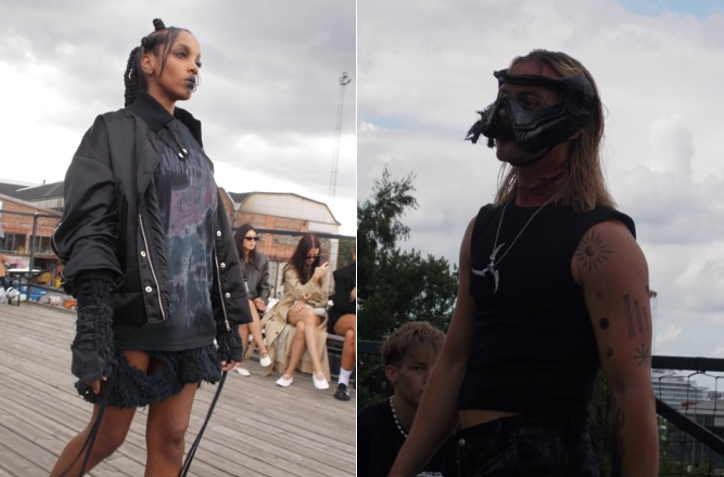
Fine Chaos’ designs mostly recall a science-fiction apocalypse. As in a science-fiction movie, this enables their otherworldly visual dialectics to stand in for all sorts of fears, disasters and conflicts in the real world. Their rhinestone logo, symbol both of Copenhagen’s underground and, now, of Big Fashion Week, also conveniently sublates more practical contradictions: between rebellion and establishment, ethics and business. Copenhagen is the world’s fifth biggest fashion week (after New York, Paris, London and Milan) and was founded in 2006 with the mission, according to its blonde, consummately Scandi-minimal CEO Cecilie Thorsmark, of creating ‘an agenda-setting platform for driving change in the industry’. All over Copenhagen – at runways, parties, panels, showrooms, ‘wellness mornings’ (bottomless matcha, a sea of tense interns in pastel leggings), shouted from Lime bike to Lime bike – agendas are set, change is driven. The most concrete and useful change which CPHFW has implemented, distinguishing it from the big four, is its sustainability requirements. All participating designers must abide by a set of nineteen minimum standards which cover the entire range of business practice, from sourcing materials to ‘emission reduction activities’ for travel during the week (leading to a cut-throat post-show scramble for those Lime bikes). In June, Berlin Fashion Week adopted the same set of requirements.
One of the issues which Thorsmark aims to solve by enforcing these rules is the vagueness of the word ‘sustainable’. When you buy a tomato marked ‘organic’ or are handed an official Fashion Week ‘Økologisk’ NODA sugar-free sparkling water, ever so faintly blood-orange-flavoured, you can be confident that what you are consuming has been produced in accordance with governmentally approved standards. When you buy a ‘Primark Cares “FOCUS ON THE GOOD” Regular Fit Graphic T-Shirt’, you have no guarantee that ‘minimum 50% cotton from the Primark Sustainable Cotton Program’ means anything, or that Primark cares. All 41 brands who showed in Copenhagen this season, however, follow a formally certified sustainability strategy. The approval process has been criticised for its partial reliance on self-reporting, but an external Sustainability Committee screens the documentation that brands provide. Since the standards were introduced in 2020, at least one designer has been ejected from the event for failing to comply. Ganni (the monsters behind those little string bows everywhere) reached their present degree of international success in compliance with and even excess of the requirements. After fifteen years as the flagship event, their absence from Copenhagen was notable this season. Their show last week, the first since their move to Paris, featured newly-invented recycled fabrics with scary names like Circulose®, Celium™ and Symplfyber Fybron™, and they remain committed to the letter of the CPHFW standards – perhaps other designers will follow suit.
Swedish brand Deadwood also take the materials requirement as a starting point, working with surplus tarpaulins, recycled leather, and leather alternatives. Designers Felix von Bahder and Carl Ollson acknowledge that ‘vegan leather’ has often been used in cynical marketing ploys to refer to pleather which is in fact ‘non-durable, non-breathable and also really bad for the environment’. However, their alternatives, made from cactus skin and residue from tea production, are certified as sustainable by the Fashion Week authorities, and look and feel realistically supple. The show is in the alley behind a former slaughterhouse in Copenhagen’s meatpacking district (from which the blood has long since been scrubbed away, replaced by restaurants serving three to five small plates per person). Models wear flip-flops or mildly gorpy trainers; even the more formal outfits, such as dresses with belts made from electrical wire, have an eminently practical air, inspired by the baggy silhouettes of Japanese workwear.
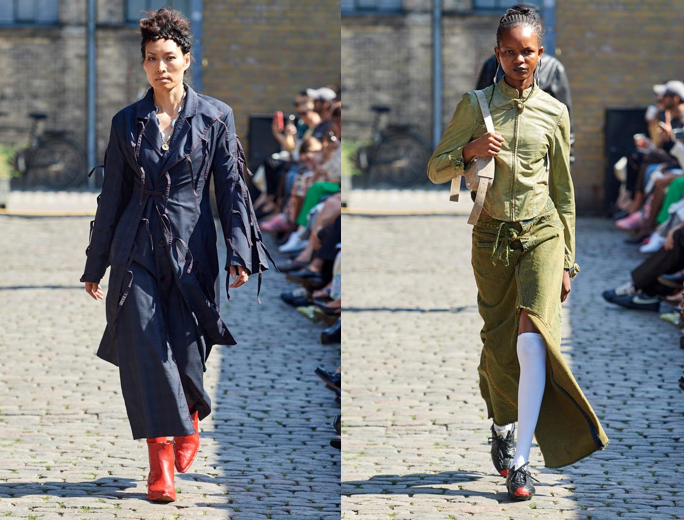
Sustainability appears here neither as an afterthought nor a particular hindrance to Deadwood’s main business of making clothes that people want to buy. It is evoked alongside whatever is evoked by tasteful greens and greys; football boots; rock music. If Deadwood’s show says anything about sustainability, it is basically that it can be cool, desirable, lucrative. This is what the majority of the collections labelled ‘sustainable’ at CPHFW say, since a fashion show, unlike (some) books or movies or paintings, is a cloud of references, evocations, allusions, rarely ‘readable’ – unless you write on the clothes. Our Shift’s t-shirts and hoodies with slogans such as ‘RE(USE) ME’ come off as heavy-handed and disappointingly chaste. They rely not only on a narrow technique (words) but on a narrow set of visual allusions; their jumpsuits made of leftover tents from the Roskilde music festival do little more than resemble them, implying that sustainability is an awkward phase which fashion must grow out of before graduating to Paris.
Designer Elisabet Stamm was similarly resourceful when it came to fabrics, informing us beforehand that she ‘went through fire to bring GOTS [Global Organic Textile Standard] certified Tencel and wool’. Once the Stamm showcase begins—inexplicably, with children releasing crates of pigeons into a cloudless sky—bedazzled hoodies, slouchy boots and blue-streaked hair create an earnestly playful atmosphere. Despite spending several hours on a rooftop basketball court with zero shade, models, team, guests and pigeon children (including the designer’s beloved small son, Svante) join for a giant, sweaty group hug after one of the most unironically fun events of the week. While some shows drew attention to their materials, others showcased the creative process. Tess van Zalinge and Serena Coelho both eschewed the catwalk format, instead presenting their collections as installation pieces. This is another way to reduce the costs and waste associated with a full runway show, and brands internationally, such as Eckhaus Latta with their dinner show in New York, have also experimented with different formats. However, one suspects that in this case that these methods might be abandoned as soon as designers can afford to put on a traditional show. Van Zalinge’s baroque corsetry makes the structures and even the tags for the clothing visible (model Stijn confirms that this was deliberate). The presentation ends with live mannequins standing around for the audience, who don’t quite get the idea, to tentatively interact with. Here the heeled flip-flop, small dog as accessory, and sheer top without bra are very much in vogue.
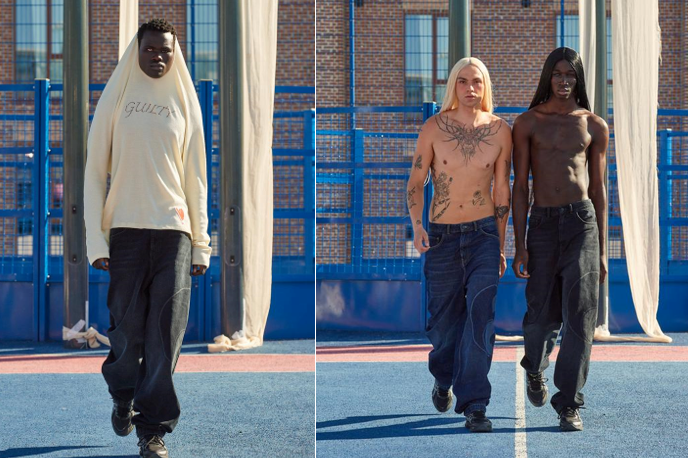
The Royal Danish Academy’s MFA degree show displays full-body balaclavas, psychedelic textiles, and elegant mourning dresses. Highlights include Kristin Sigus’ gigantic paper-boat hats and Asger Beyer’s fairy-tale tulle skirts. Caoimhe Dowling, an Irish designer based in Copenhagen who graduated recently from this prestigious programme, reminds me that the most sustainable alternative to fashion week is not sustainable fashion week but no fashion week. She chose not to put on a show this year: ‘The traditional schedule is a bit too chaotic. There’s no time for reflection or a creative process.’ Her sculpturally tailored pieces are designed to be worn for a lifetime and making them is correspondingly laborious. She describes a utopia ‘similar to the past, with people making their own clothes – my grandmother would have made all her children’s clothes … Small brands that are not throwing marketing down your throat … Just clothing made from the heart. No rubbish clothing, no fast fashion.’ This vision feels almost impossible, but she notes that CPHFW allows designers ‘more room for manoeuvre’: instead of contributing a show she participated in the form of a talk with her yarn suppliers discussing art, nature, and the climate, promoting her clothes in a different fashion.
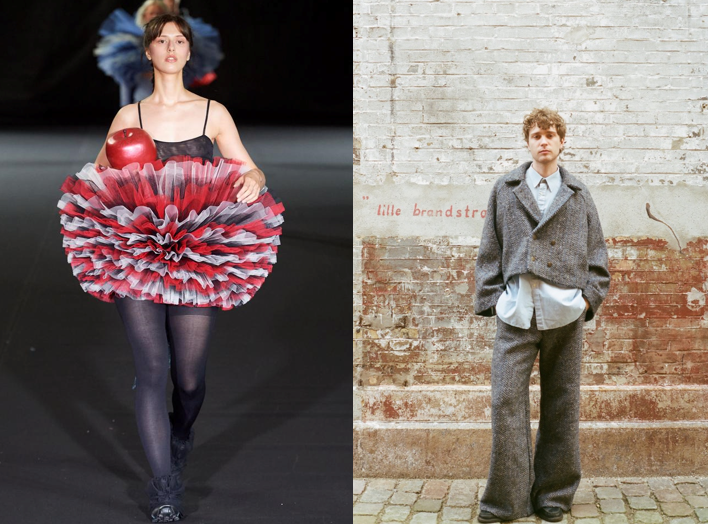
Perhaps due to a background in professional poker rather than art school, Finnish designer Rolf Ekroth draws us into a childhood fantasy world free from self-conscious allusiveness. A warehouse so ur-industrial that it doesn’t impart any specific atmosphere functions, draped in black cloth, as a blank canvas for Ekroth’s transporting designs. Warm plaids and hand-painted florals are inspired by latavanssit, barn-dances which were the place to be for the generation of Ekroth’s grandparents. Cheerful Finnish folksongs belie hints that something is rotten: tears streak the models’ faces, and jackets fashioned from life rings imply that not everyone sailed back from the dance alive.
I follow the echoing beats of ‘pussy…pussy…pussy’ outside to the next show. Models arrive loudly and precariously on motorbikes and ascend a playground of scaffolding erected for the occasion. If CSM graduate Alectra Rothschild’s previous collections have been more straightforward clubwear, this season of Masculina evokes a rose-tinted (but definitely not hygge) afters. Studded jockstraps, belts as skirts and skirts as belts still abound; but softened by rococo layers of frills, lace and velvet. As at Stamm, this is a family affair: the show is soundtracked by Rothschild’s frequent collaborator djg2g (of recent ‘365 but now i’m feeling like a nasty partygirl day n nite’ remix fame), and pieces were tailored (home-made latex!) to fit the friends who make up the majority trans cast. Rothschild is, like everyone this week, manufacturing desire, but she does a particularly good job. Her runway is a melodramatic fantasy, an escape from the world of business with its problems, contradictions, nineteen-point sustainability strategies; a daydream instead of a vision of apocalypse. But this most fantastical of events has the most practical effects, probably more than the much-lauded reduction of carbon emissions from a single week of fashion shows, since Masculina caters to a community to which fashion provides a genuine escape from genuine problems. And Rothschild’s fantasy is of life as an unending game of dress-up; which, for anyone who loves, inspires and wears her clothes, it could be.∎
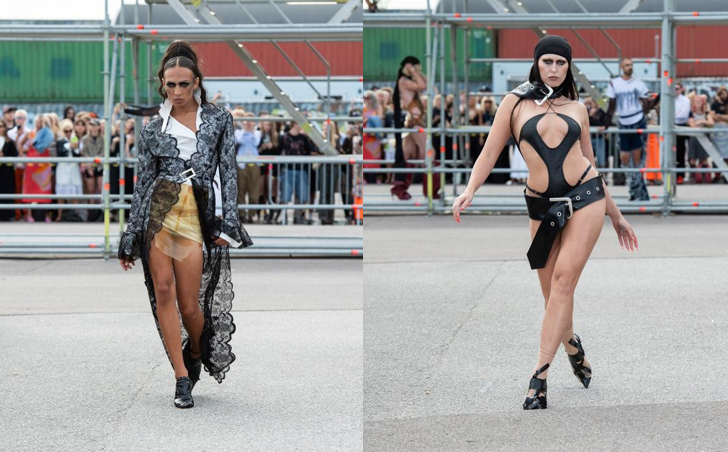
Words by Maya Herz. Images courtesy of Maya Herz.






